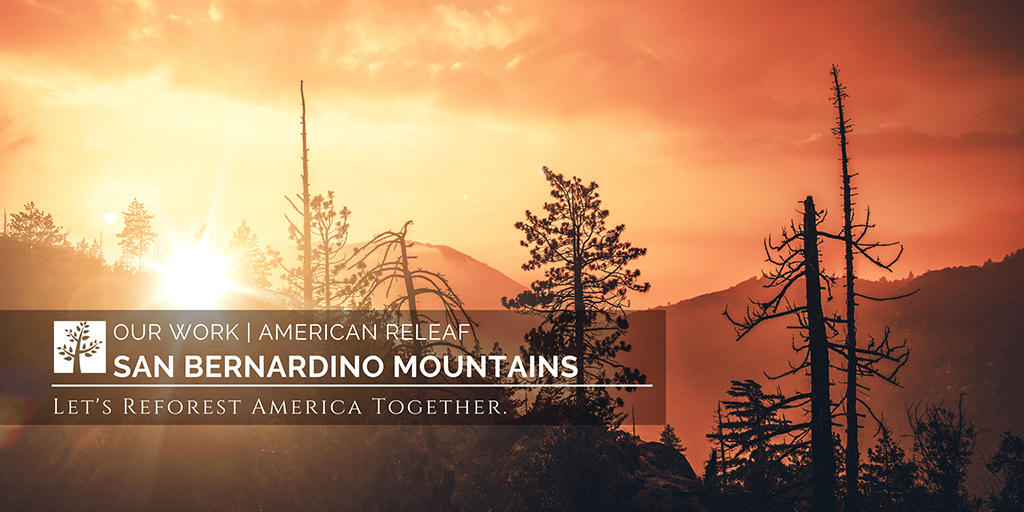
Developing a Climate-Smart Restoration Plan for San Bernardino
With 1,600 different types of plants, the San Bernardino mountain range in southern California is one of the most species-diverse ranges of its size in North America. With that variety comes tremendous diversity in wildlife—70 threatened and endangered animals, including bald eagles, peregrine falcons and bighorn sheep.
Climate change is dramatically altering the region’s forests and, subsequently, the ability of the forests to provide a safe haven for wildlife, purify the drinking water that thousands of people in the greater Los Angeles area rely on, sequester carbon and more.
Climate change-induced wildfires, prolonged drought and insect epidemics are changing the forest from one dominated by Jeffrey Pine, Incense Cedar and other conifers to a forest dominated by highly-flammable shrubs that, compared to conifer forests, cannot provide people and wildlife with the “services” they need to survive.
To address these challenges, American Forests will, over the next two years, lead the process of developing a climate-smart restoration plan for the region’s forests. The plan will include measures—such as targeted shrub control, rapid reforestation after fire and planting tree species from lower elevations—that will ensure the forest can adapt to climate change and play a role in mitigating climate change. To develop the plan, we will work with the Mojave Desert Resource Conservation District and Cal Fire to assess climate scenarios and restoration capacity, map local site conditions and compile a list of climate-informed practices. A similar approach is used by the Northern Institute for Applied Climate Science, a consortium that includes American Forests.
We also will help plant 80,000 drought- and fire-resilient trees and thin 100 priority acres on public and private lands in the San Bernardino area, tapping into the help of volunteers and contractors from the local community.
Our hope is that this work will improve the health of the San Bernardino forest and help shelter 60,000 people across 10 mountain communities from the threat of catastrophic wildfires and public health problems, such as asthma. We also will use the results and lessons learned from this project to do similar work in the region and in other parts of the U.S.
This work is supported with funding from the National Fish and Wildlife Federation and Wells Fargo’s Resilience Communities Grants program.